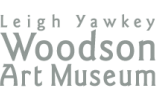As a young child interested in art, I remember hearing the phrase “a line is just a dot that went for a walk.” I learned later in life that this famous saying, which teaches one of the fundamental principles of art making, was credited to the famous artist Paul Klee. As a working artist myself, I am often seeking out inspiration from artists across history to understand how and where my own work fits in. I relate to Paul Klee’s work because of its connection to Formalism, which emphasizes a higher level of importance on the way an artwork is created with visual elements like line, color, texture, shape, etc. instead of its narrative content, subject matter, or historical and social context.
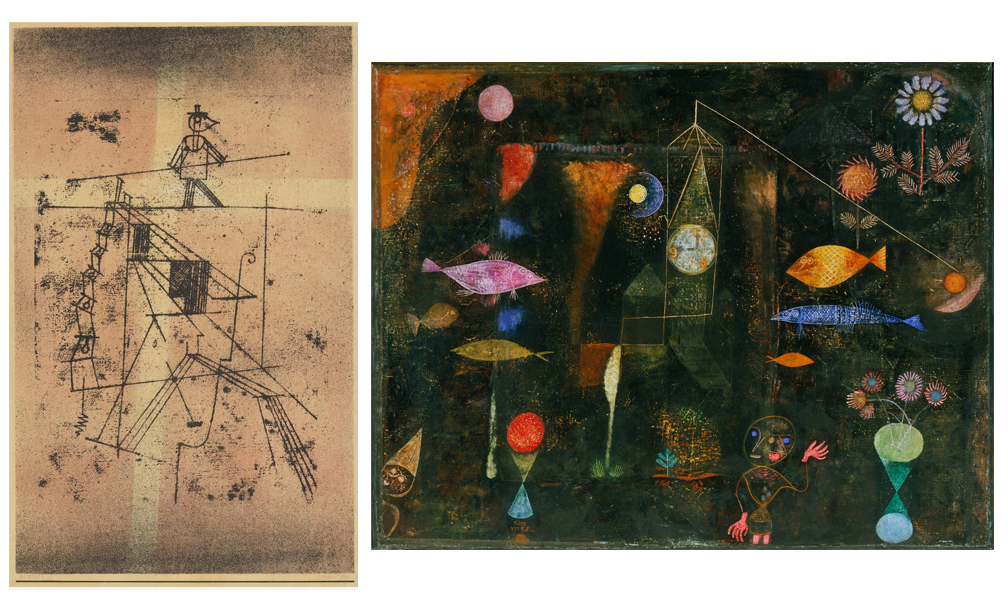
(left) Paul Klee, Seiltänzer (Tightrope Walker), 1923, color lithograph on paper, National Galleries Scotland, (right) Fish Magic, 1925, oil and watercolor on canvas on panel, Philadelphia Museum of Art
Right now, in my own studio, I am working with collage and abstraction to build both two- and three-dimensional artworks. I find that throughout the process of making, I tend to notice the formal elements of my work and respond to them by asking myself questions like what line should go here? What type of shape makes sense on top of this one? How can I create more texture? Does this composition need color or another material? In my opinion, simplifying any type of art making into these components makes the blank page seem less scary.
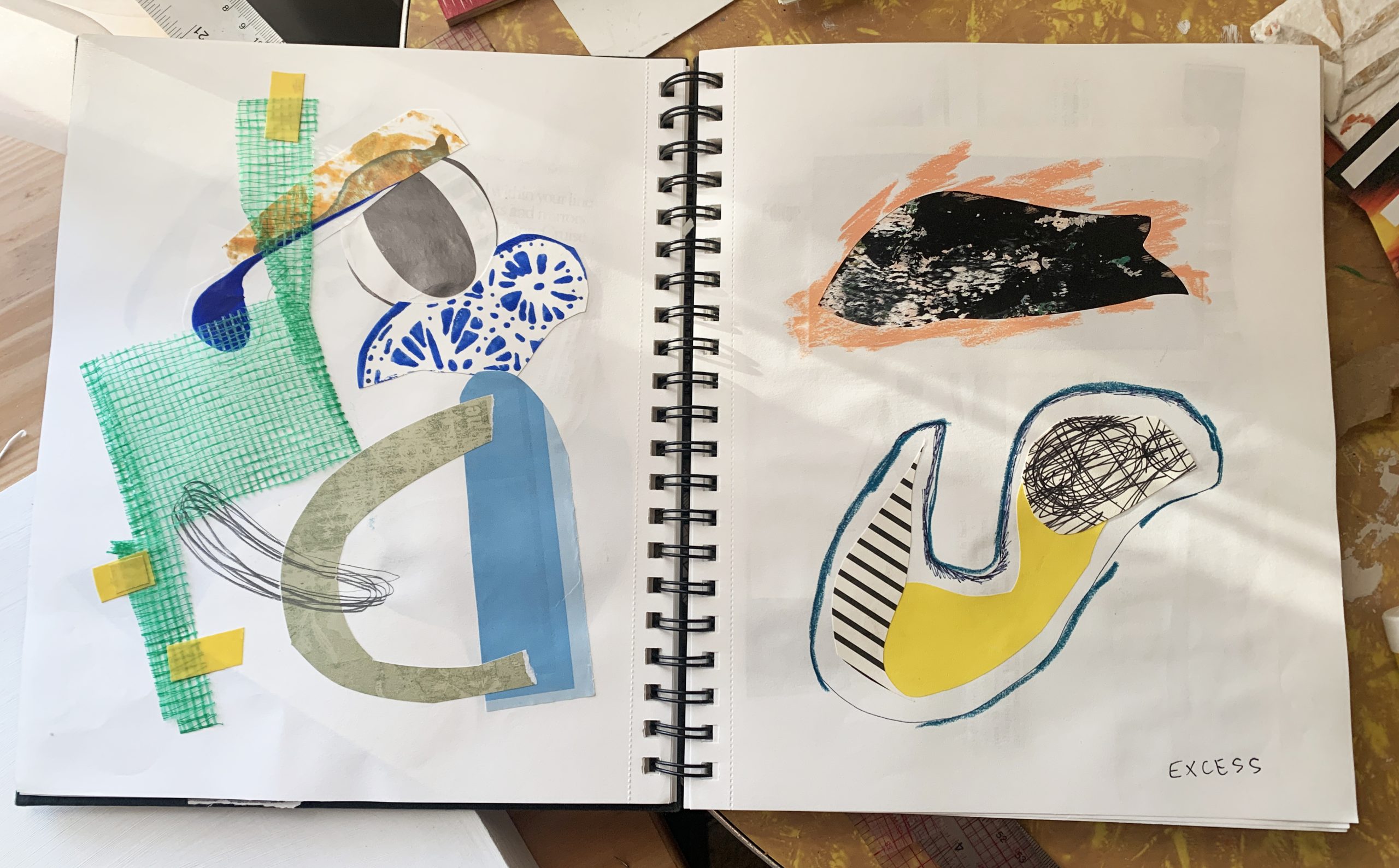
Recent collage studies from my sketchbook
I find that it’s helpful for my practice when I can be reminded of the basics – line, color, shape, and texture. Recently, fellow museum staff member Dave Jones and I taught a four-part drawing class at the Glass Box Studio. We were both eager to get back to the basics and share some of our knowledge with participants. Dave and I taught students foundational skills with charcoal, all while experimenting and having fun. We created gesture drawings, learned various mark-making techniques, used reduction, created collaborative drawings, and attempted some “off the wall” ideas, like practicing blind contour (a technique that requires a person to not look at their paper while drawing), and using a piece of charcoal taped to the end of a stick as a drawing utensil. Each class, we used objects from the Museum’s permanent collection as subject matter for our drawings. Our final class implemented the Museum’s recent acquisition of Paul Rhymer’s Mama Bear as the main attraction. Over the span of just four short classes, both Dave and I could notice incredible improvement in the students that took part. And it all began by taking a dot for a walk.
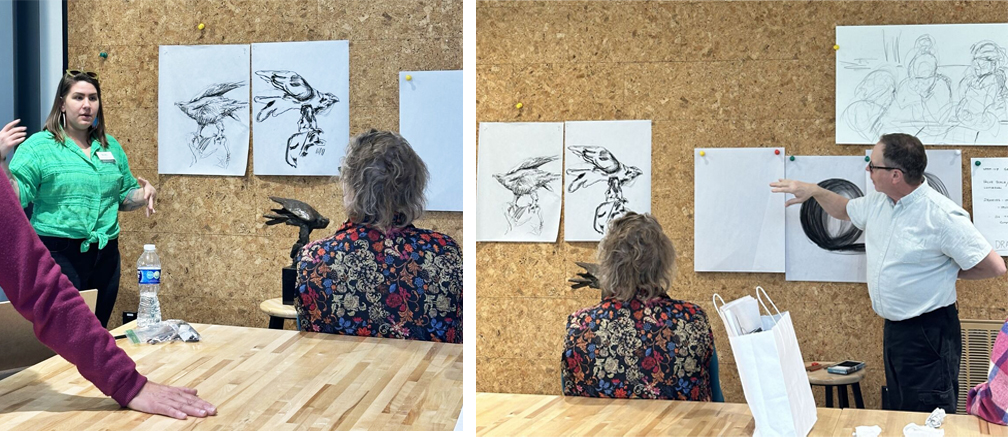
Teaching during Drawing Basics at the Glass Box Studio
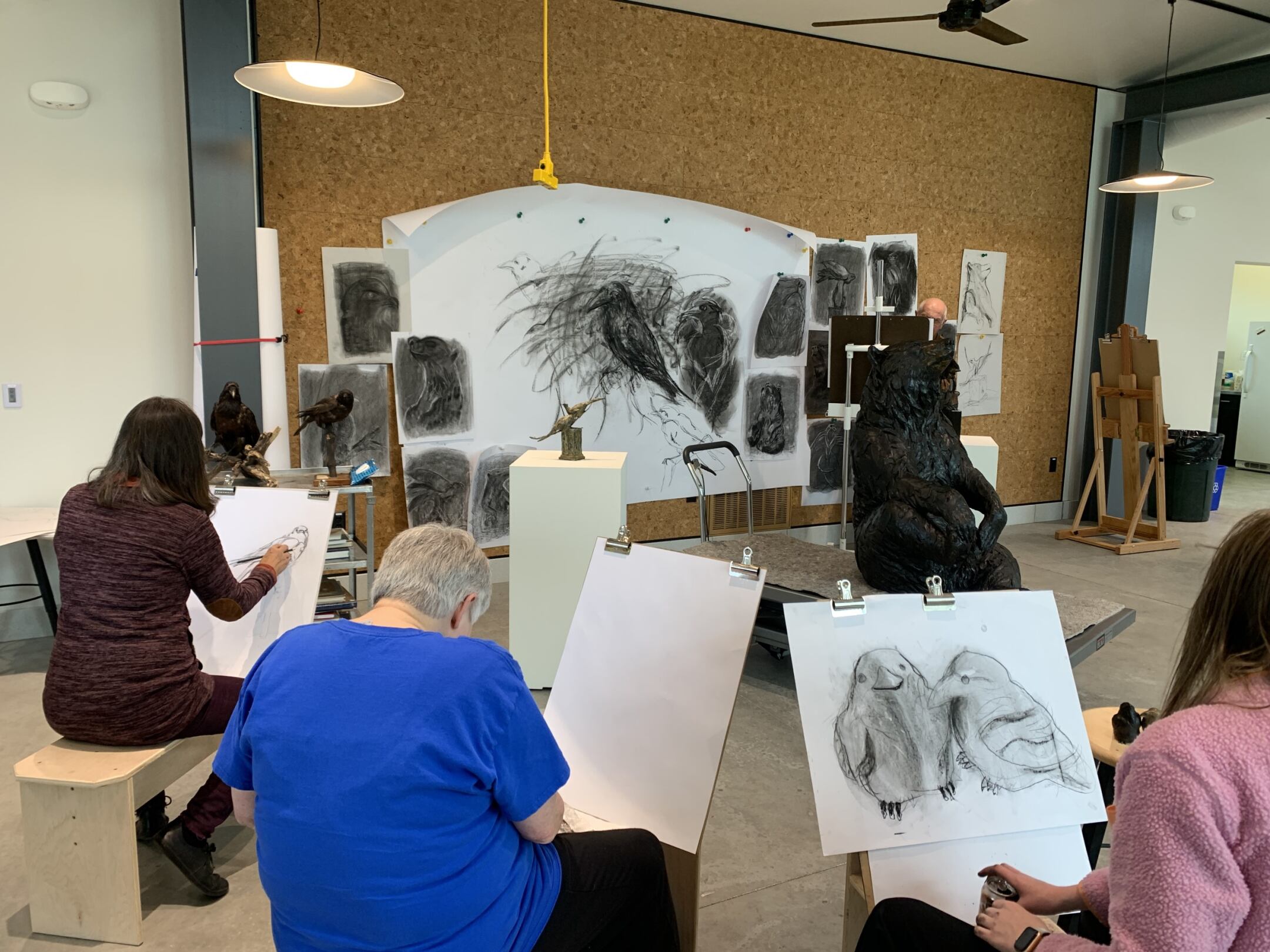
Students working while observing sculptures from the Museum’s permanent collection
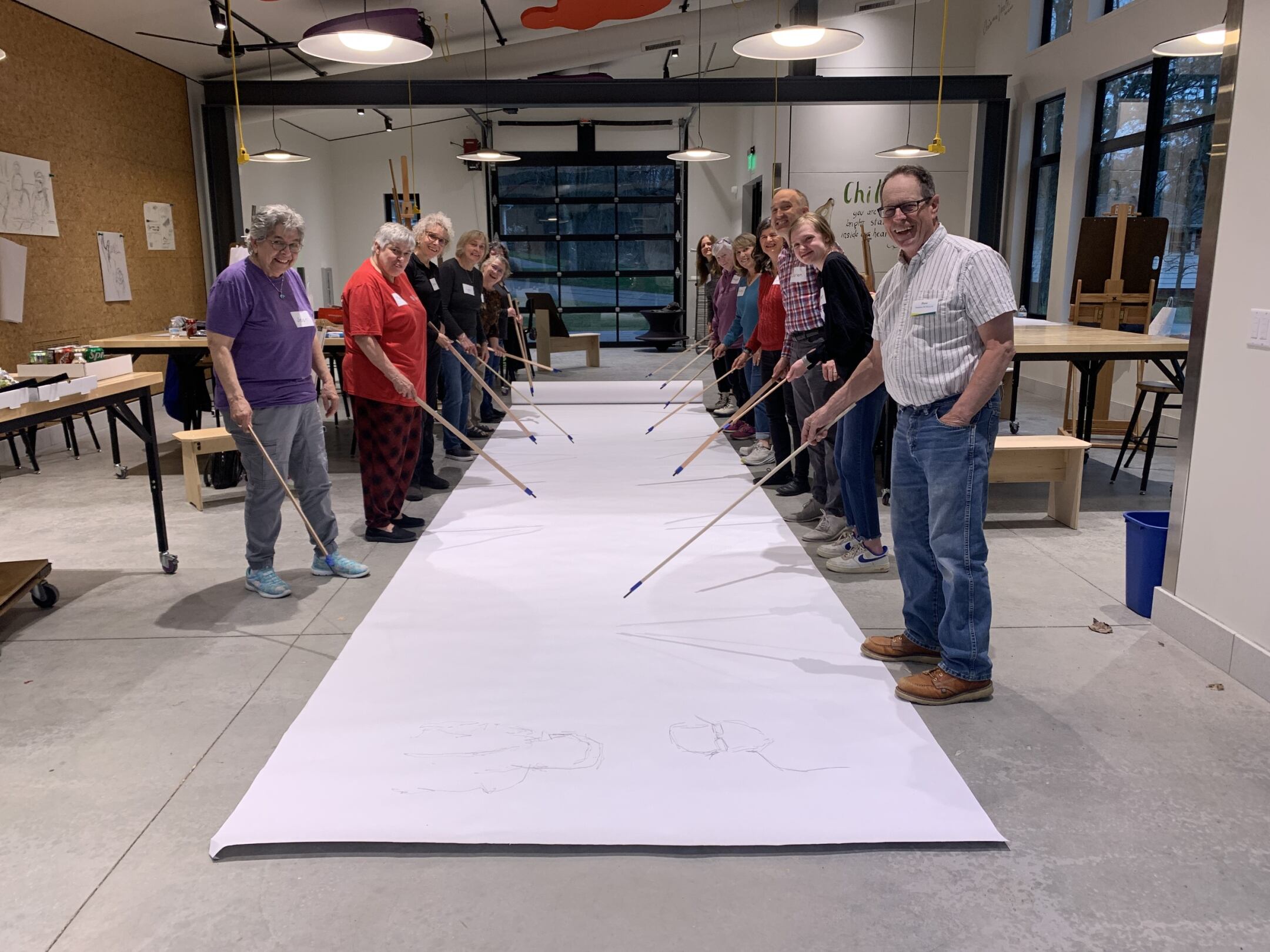
Participants trying out charcoal attached to a stick as a drawing utensil
Its experiences like these that remind me just how important the fundamentals are and why I should continue to celebrate them in my practice as an artist. Every drawing begins with a line. Formal qualities are what build any piece of art, and it’s good to take notice of that. I encourage you to try taking a dot for a walk sometime and see what you can learn from the simple act of drawing.
